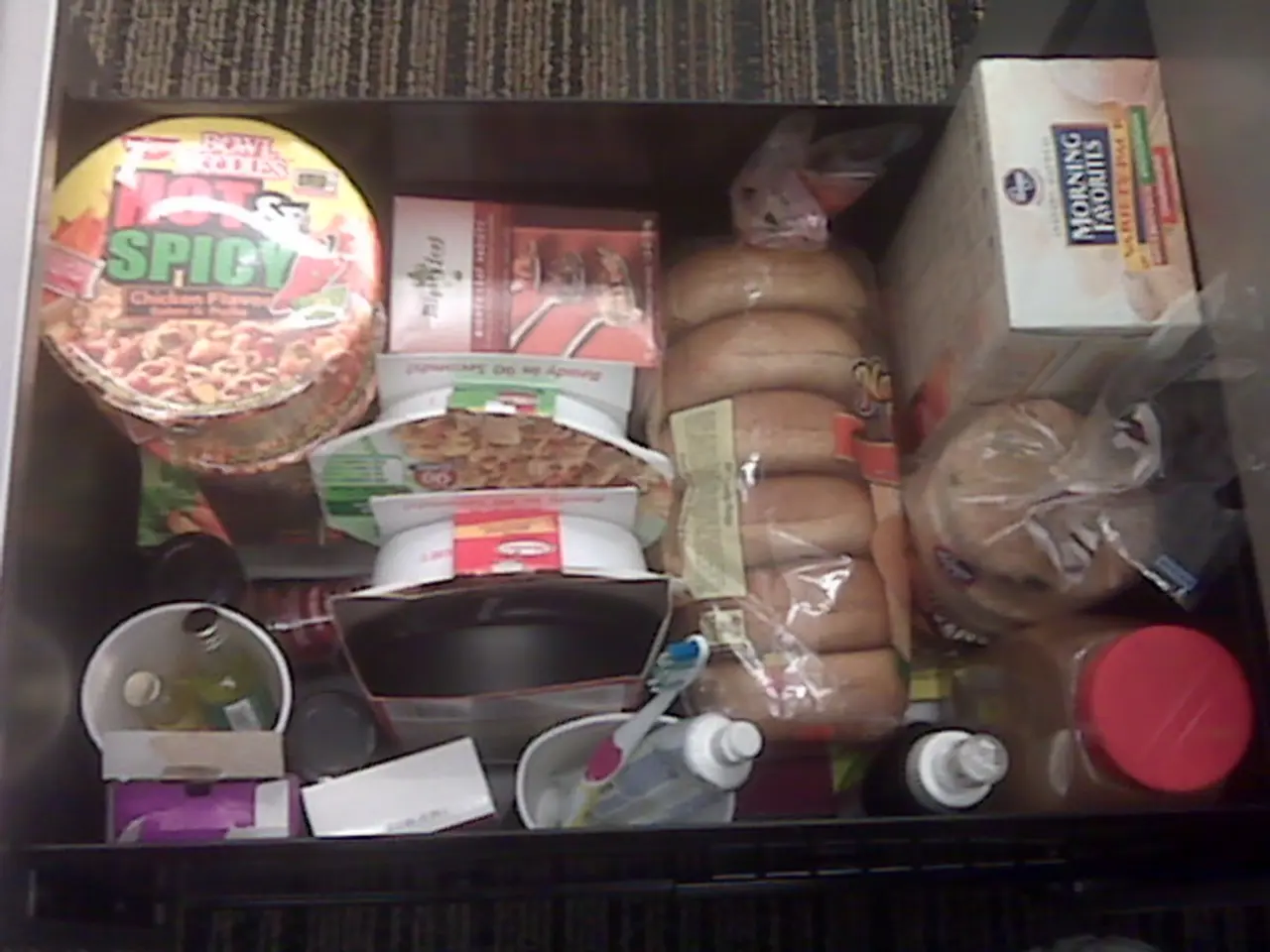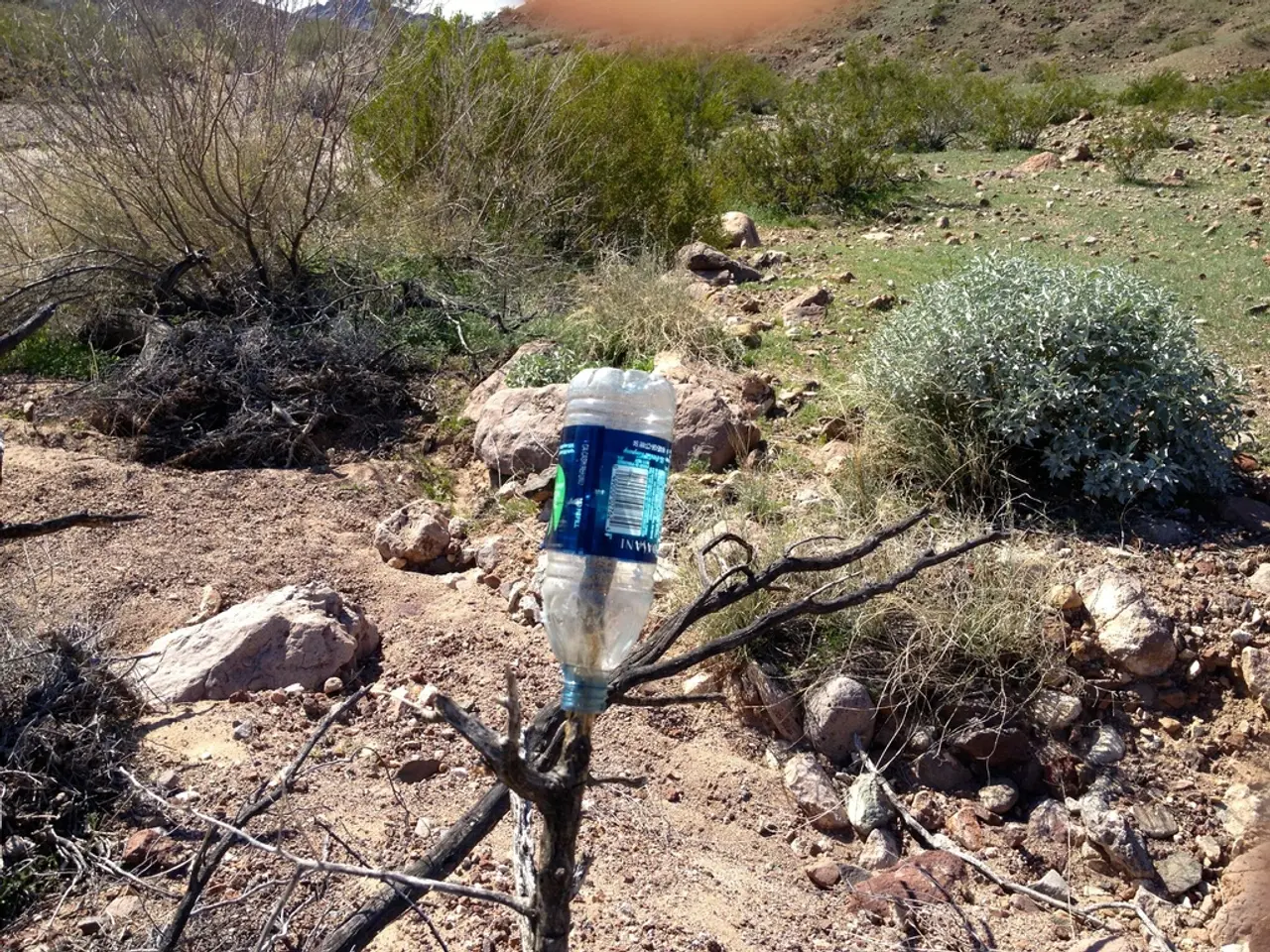Crucial components for your domestic disaster preparedness essentials
In light of the common natural disasters such as bushfires and floods, it's essential to be prepared for emergencies. Here's a guide on what to include in your home emergency kit, based on recommendations from various sources [1][2][5].
Essential Items for Your Home Emergency Kit
Water and Food
Store at least a three-day supply of non-perishable food items like granola bars, breakfast cereals, jerky, canned fruits and vegetables, and peanut butter. Don't forget about a three-day supply of drinking water [1].
First Aid Supplies
A comprehensive first aid kit is crucial. It should include band-aids in various sizes, basic medications like painkillers and antacids, antiseptic wipes or refresher towels with alcohol, and any personal medications for pre-existing conditions.
Light Sources
Torches (flashlights) with extra batteries and candles are essential. They can also be used as fire starters and to waterproof wound dressings. Don't forget about water purification tablets like Puritabs [1].
Tools and Repair Items
Include wire, safety pins, rubber bands, and possibly a small fishing kit with hooks and line for emergency food sourcing.
Communication Devices
A battery-operated or hand-crank radio is vital to stay informed during emergencies.
Hygiene and Sanitation
Hand sanitizer and N95 masks are essential for protection.
Additional Items
A multi-tool, waterproof matches or lighters, and plastic bags for water collection or waste containment are useful additions.
Practical Tips for Your Home Emergency Kit
- Store your kit in a waterproof container kept above floor level in the house, with everyone in the house knowing where to find it.
- Keep chargers and/or charged battery pack for your phone in your kit.
- Regularly check and replace expired items, and tailor your kit to specific household needs and local risks.
If you live in a remote area where emergency help may be more difficult to access, pack more supplies in your kit. In emergencies such as floods, fires, or blackouts, having a home emergency kit can help keep individuals and households safe and healthy.
Other Considerations
- Spare cash should be kept on hand to purchase basic or urgent needs if you need to leave your home.
- A smaller first aid kit can be kept in your car, and it is recommended to undertake some first aid training.
- Protective clothing, including long-sleeves shirts, pants, sturdy shoes or boots, wide-brimmed hats, sunglasses, sunscreen, insect repellent, and thick work gloves, should be packed for each household member.
- In an emergency, a safety whistle and a reflective object (like a mirror) can be used to signal for help.
- If you have babies or pets, pack enough supplies for their specific needs in the home emergency kit, such as nappies, wipes, food, and pet food.
Importance of Copies of Important Documents
Copies of important documents such as identification, insurance information, and medical records should be included in a home emergency kit to help prove identity, pick up medication, or make insurance claims during evacuation or after an emergency.
Insurance Coverage
RACV Home Insurance provides coverage for a range of unexpected events.
Remember, being prepared can make a significant difference during an emergency. Take the time to assemble your home emergency kit today.
In the realm of health-and-wellness and lifestyle, it's crucial to maintain good habits even in emergency situations. When constructing a home emergency kit, consider adding non-perishable food items like granola bars, canned fruits and vegetables, and peanut butter for food-and-drink [1]. For fitness-and-exercise, packing a multi-tool and a small fishing kit with hooks and line can ensure you have tools for emergency food sourcing [1]. Lastly, home-and-garden necessities, such as waterproof matches or lighters, can aid in waterproofing wound dressings and collecting water during emergencies.




